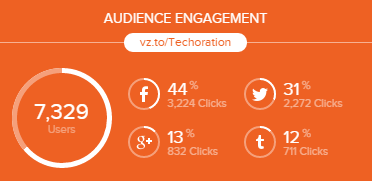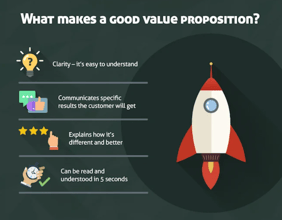There are countless benefits to running digital marketing campaigns, and we’re guessing by now, you’re not only familiar with their benefits, but also their results!
Digital marketing campaigns can help you:
- Get in front of more potential guests during an off peak season
- Reward loyal customers
- Build awareness around your brand
Here are 10 easy steps to help you plan, launch and track your hotel’s digital marketing campaign.
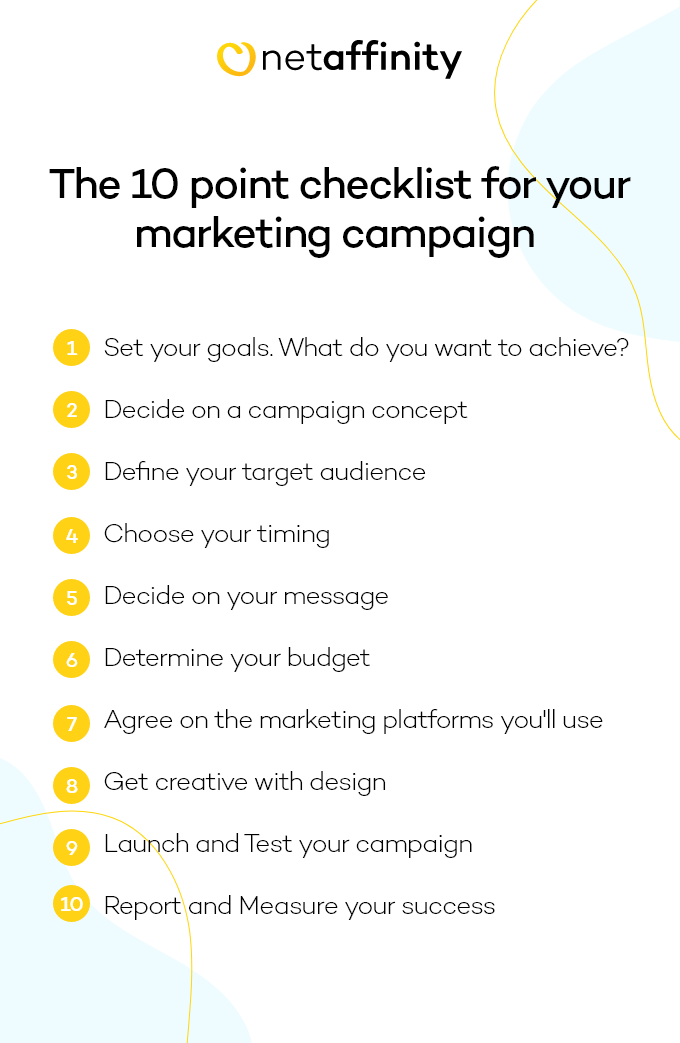
1. Set your campaign goals
Before anything else, take a breather and ask yourself: “What is my motivation for this digital marketing campaign?” Although you might have a rough idea of what your campaign goal is, outlining it in writing for yourself and your team is helpful. It will provide you with clarity and will also help later on when you are reporting on your campaign’s performance, to show whether you reached it or not.

To help you outline your goals, make them SMART:
- Specific – they should be clearly defined
- Measurable – they should be measurable so you know when you’ve reached them. Make sure you define the metrics you will use to measure them
- Achievable – you should be able to actually achieve your goals. Don’t make them unattainable!
- Relevant – they should be relevant to your overall business goals and to your hotels sales & marketing plan
- Time-sensitive – they should be achievable within a reasonable period of time

2. Decide on your marketing campaign concept
Once you’ve set your goals, it’s time to decide on the concept of your campaign.
To do this, you need to decide on a number of key factors which will make up your campaign: for example, what offer and price point you are going to promote?
When it comes to discounts, try offering an add-on instead of a percentage discount. Research shows that people prefer getting something extra, and it can actually be easier (and quicker) for them to understand the benefits your offer will provide them with.
Think “Buy one get one free!” instead of “50% off!”. It seems like a small thing, but it makes a big difference.

Do some research too, and see what your competitors are doing. This will help you to make your offer unique.
3. Define your target audience
The kind of data found within the ‘user demographics’ segment in your Google Analytics account can help define the demographics of customers who are already engaging with your website. You can also take a look at your booking engine data and your guest personas.
How old are they? Where do they come from? Why are they staying with you?
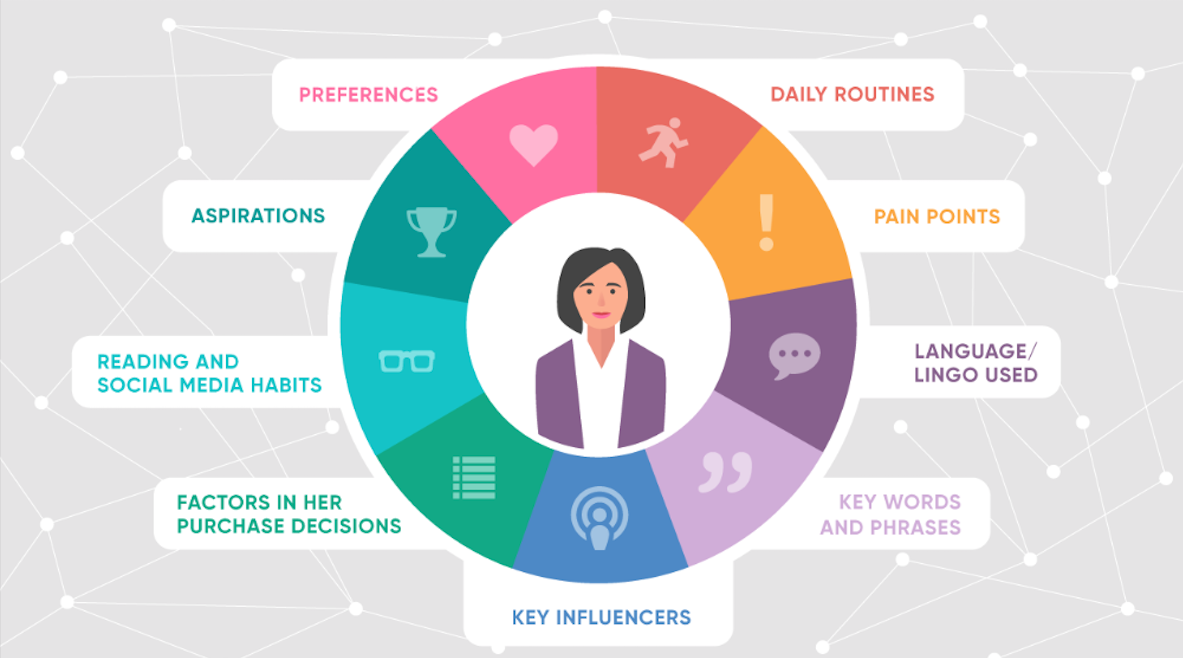
If you’re looking to reach an audience that’s new for you with this campaign, do some research online to see how you can engage with this audience. Ask questions like – what are their daily routines? What media do they consume? What are their pain points? Who are the influencers they listen to? What factors do they take into their purchasing decisions?
Try and narrow your targeting as much as possible. This will make your message more focused, which will result in a better performing digital marketing campaign.
If you find you have more than one target audience, that’s okay. However, it’s more than likely that you’ll need to tailor your message differently for each of your audiences.
4. Choose your timing
Depending on your offer and target audience, the timing of your campaigns can make all the difference.
For instance: if your target audience are price-conscious demographic, it may be clever to wait until the end of the calendar month to coincide with their pay date.

You also need to make sure your campaign time-frame is realistic. If you launch a last-minute campaign for dates in the very-near future, this is less likely to scale volume as your audience has less notice and it will appeal to a much smaller group of people.
Do some research into the average lead time for the demographic you are targeting.
If your campaign is time-sensitive and only available for 48 hours for example, it’s a smart idea to send teaser messages out on your communication platforms so your audience know there’s something coming.

There is no universal rule book to the best time and day of the week to launch a campaign. However, recent research shows Tuesday and Thursday to be the ‘best’, most efficient days of the week, with Thursdays getting the highest click-to-open rate (15.2%).
5. Decide on your message
So. Now, you need to decide what you want to sell, who you want to sell to, and when you want to sell it. Next, you need to decide how you’re going to sell it.
You want your customers to pick you, and why should they?
Which brings us to: your unique selling proposition. Your USP needs to translate into an experience and draw your audience in. Think the likes of “Enjoy your stay at X with magical views of the sunset” and “Make memories under the crimson skies at X. You’re highlighting the same feature, just with different effects.
Similarly to your hotel’s own value proposition, ensure your offer’s USP:
- Can be read and understood within 10-20 seconds
- Explains what makes it different or unique
6. Determine your budget
Agreeing on your marketing budget is a fundamental aspect of your campaign set up. Once your budget has been confirmed, you can identity the potential platforms where this budget can be spent, as well as determining the scale of the campaign.
If you have set yourself a target to sell €20,000 worth of vouchers, you need to be willing to invest to get this level of business. A general rule of thumb is to invest between 5%-10% of potential revenue, but many factors can influence this.

We discuss your 2021 budget in one of our latest hotel marketing podcast episodes if you’d like to have a listen.
7. Marketing platforms
This is where it’s time to get creative.
Using your allocated budget, and keeping in mind both your target audience and offer, you need to decide which platforms you’re going to use to promote your campaign.
Paid social media
- Facebook – Facebook has proven to be one of the most successful e-commerce platforms when it comes to promoting a campaign or offer to a specific audience. Highly relevant and targeted audiences allow campaigns to be tailored to a specific audience set.
Have a listen to our podcast on different Facebook ad formats here.
Some features we would recommend using within the Facebook advertising platform include Facebook Remarketing and Custom Audiences.
- Instagram – You can control your Instagram campaigns via your Facebook Advertising account. Instagram is a visual platform so make sure your posts are eye-catching! Check out our checklist for more ways you can use the platform to boost your bookings. And don’t forget about Instagram stories.
- Twitter – Advertising Twitter will help you increase your hotel’s brand awareness. We don’t usually see a significant revenue stream through Twitter, however, if your campaign is unique and there’s something really special to shout about, then Twitter is your platform for growing your reach and awareness. More tips here!
Paid search & Display: Google
- Google Ads – For most independent hoteliers, Google ad campaigns are already being used to drive both brand and generic traffic to your site.
When you’re running a specific promotion, you should utilise your existing search and display presence on Google to draw attention to your campaign.
Some features you can use to help promote your campaign:
- Highlight your promotion within your Google search network ads
- Use advert sitelinks to deep link searches directly into the your offer page
- Use Google Remarketing on the Display network to promote your offer. Image ads work best for this, so like Instagram, your offer needs to be presented using strong imagery
- Video bumper ads allow you to reach a really large audience with a relatively small budget. Listen to our podcast for more on these 6 second wonders
- If your budget will stretch, display marketing can scale your reach to a much larger audience and can help to drive awareness of your promotion to a new audience
Email Marketing
- Email Marketing should be considered an integral part of any digital campaign, as it allows you to engage directly with your email database. Depending on the quality of your database, this channel can drive considerable revenue. Here are some tips on how to create an email marketing strategy that will win you more direct bookings.
Simplicity is key when it comes to the design and message of your email communication.
When you’re running a promotion or campaign, we recommend communicating with your audience before and during your campaign.
Here are two ideas to get you started:
- ‘Teaser’ campaigns can work really well at getting your email audience engaged and alerted. Send an ezine 48 hours before your campaign starts to let them know that something special is on its way to their inboxes
- Offer exclusive access to your offer before its general release
Your Website
Your website is the most important channel of all! All your marketing campaign activity across digital platforms will be directing traffic into your website, so you gotta make sure it’s in tip top shape.
Some things to consider:
Your Home Page
If someone lands on your home page, how do they know that you’re running a promotion?
Using features on your website such as action bars can help to highlight your promotion instantly to website visitors.

Marketing Landing Pages
When you drive traffic to your site from targeted campaigns, you should be landing them on a page specific to your promotion.
The best solution for this is to use a marketing landing page, where all the content, images and offers on that page are directly relevant to your campaign.
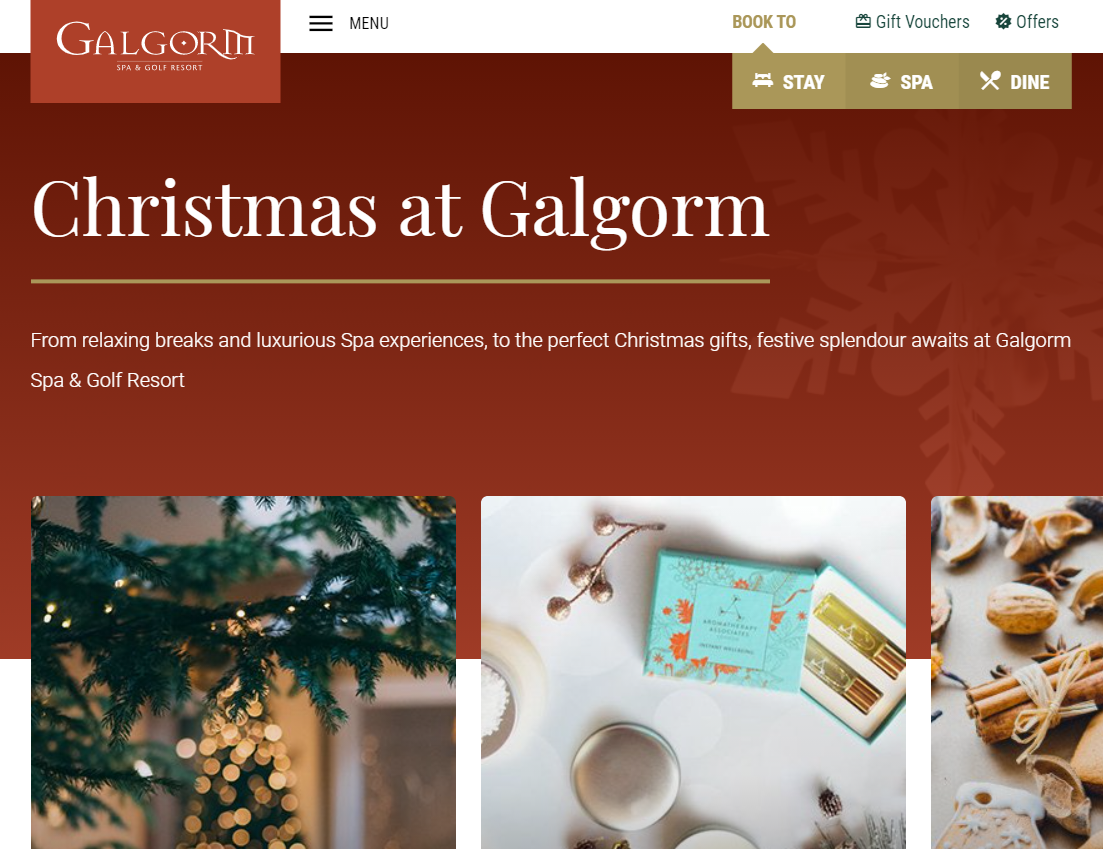
Landing pages are a hugely effective tool to truly get the most out of your campaign. Landing pages are created with a single objective – to increase conversions by engaging with the user once they land on your site. Here are a few pointers on how to craft a landing page perfectly.
Message match is important. The message across all your platforms must match the message on the landing page you are directing the traffic into.
People who land on your landing page look for a continuous message from the original touch point, eg the link in the Facebook ad or email they followed through on. Are you using the same visual in both? Make sure your titles, wording and images all match up. If they don’t, you could confuse potential customers and lose their interest.
8. Get creative with your design
At this stage, you’ve nailed down the key elements of your campaign. To get the best results from your visuals, don’t start designing your creative until all points from 1-7 have been agreed on!
Make a note of all the platforms you need to design visuals for and make sure your message will work across each one. You’ll need to customise your message per platform based on image dimensions and text limitations. However, it’s important that your key message and ‘hero shot’ remain the same across all platforms to up-keep consistency and message match.
Having a strong visual that clearly, and creatively represents your offer is so important! You need it to catch the eye of your potential guests and tempt them to click.
Given the steady increase in mobile traffic and revenue, you can’t forget to ensure your content is designed for mobile as well as desktop. Your new motto: mobile first!
Some tips for choosing your visuals:
- Never compromise on the quality of the image you’re using – this image is representing your brand. If you’re purchasing stock imagery, it’s a valuable investment, and whatever you do, don’t use unlicensed images. We recently listed out our favourite stock imagery websites on our hotel marketing podcast, have a listen back here
- Your visual should be powerful enough to express the message of your ad. It should relate as much as your copy does to your campaign USP. Don’t use a visual for the sake of it, make sure it has a purpose
- Remember when you’re picking your visuals that people are emotional and will respond to content that speaks to their emotions
9. Launch your campaign – and TEST, TEST, TEST!
Before you launch your campaign…
Test everything!
Take a step back and make sure that everything looks and works how it should. If it’s an offer set up in your booking engine, do a test booking and ask yourself, ‘does all this make sense?’ Even better, get someone unfamiliar with your booking engine to do a test booking.
You need to make sure that all the relevant tracking has been set up. From the day you launch a campaign, you can tweak and optimise ads until you get them right. For platforms like Facebook, we recommend setting up multiple advert variations and after the first few hours or days, optimise the account by pausing the worst performing adverts.
If your website is set up with Google Tracking, then your analytics will do the work for you.
Here are some tools we recommend using to give you that extra bit of juicy data:
- bit.ly – This is a great tool to use when posting links to social media platforms and provides you with extra data regarding click and engagement activity. It also shortens your link so it looks cleaner and takes up less character spaces. Particularly useful for Twitter.##
- Google URL Builder – this tool allows you to customise your URLs so you can clearly see your campaign performance data within your google analytics account. Here’s a guide with a few more details on how the URL builder works.
Timing is important when launching your marketing campaign. Make sure you’re pushing messages out to your audience at a time that is right for them, as we went over a few steps ago.
10. Report and measure your success
While your marketing campaign’s running, it’s important that you check the daily performance and keep a note of what’s working for you.
The benefit of digital marketing is that it can be monitored and changed in real time. If you make a change on a platform like Facebook or Google, your changes can be live within minutes.
Keeping track of your key KPIs and the goals you set for yourself initially are important whilst the campaign is running, but remember: Rome wasn’t built in a day. It often takes hours, if not days, for a campaign to start gaining traction. Don’t be too hasty in changing or pausing something if you don’t see immediate results.
Once your marketing campaign has ended, prepare a report on how each platform performed. Include all engagement and ecommerce metrics, such as your ROI & CPA. This will help to inform what kind of activity you go ahead with in the future.
The lessons you learn from each campaign will provide you with key insights to take with you into your next campaign.
It’s important also to note: while your initial goal was to drive awareness and bookings for this specific offer, there’s an added benefit. Check out your assisted conversions in your Google Analytics. This will show you how the traffic from this campaign has resulted in revenue via other rateplans, and conversions of other goal completions on your website.
Note: this blog was originally written in 2015 but has been updated to reflect developments and changes since.
Did you find this blog useful? Follow us on LinkedIn for new and insightful weekly content written for hoteliers.


